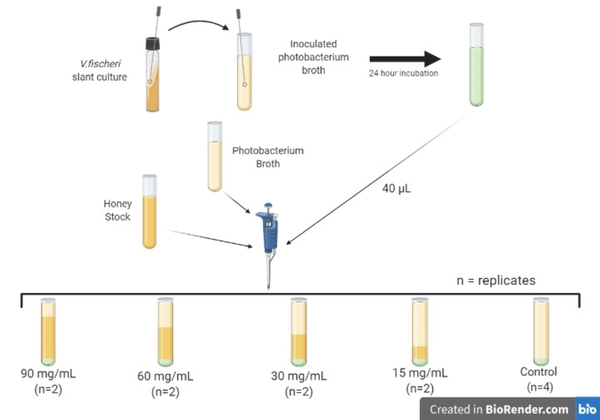The characterization of quorum sensing trajectories of Vibrio fischeri using longitudinal data analytics
(1) Central Buck High School East, (2) Harvard University
https://doi.org/10.59720/22-227
Quorum sensing (QS) is the process in which bacteria recognize and respond to the surrounding cell density, and it can be inhibited by certain antimicrobial substances. In Vibrio fischeri, bioluminescence intensifies as more cells utilize QS, making it an accurate biomarker for QS. In this study, we showed that observed illumination intensity data measured at multiple time points is insufficient for evaluating and comparing QS activity across different cultures without proper statistical modeling. We introduced a statistical approach to characterize illumination trajectories over time using longitudinal data analytics. The approach was tested on the naturally illuminating bacteria, V. fischeri, which emit light when QS is activated, but it can also be implemented with green fluorescent protein (GFP) and its numerous applications. To compare multiple QS trajectories, we suppressed QS activity at varying levels using honey, known for its antimicrobial and anti-QS properties. We characterized and compared illumination trajectories through time in bacterial cultures containing five Manuka honey concentrations. The longitudinal approach analyzed illumination data throughout the entire QS cycle and correctly ranked bacterial cultures according to their true level of QS activity. Conversely, the conventional cross-sectional approach was inconsistent in evaluating bacteria for their QS activity and trajectory. We conclude that modeling illumination intensity through time provides a more accurate evaluation of QS activity than conventional cross-sectional analysis.
This article has been tagged with: